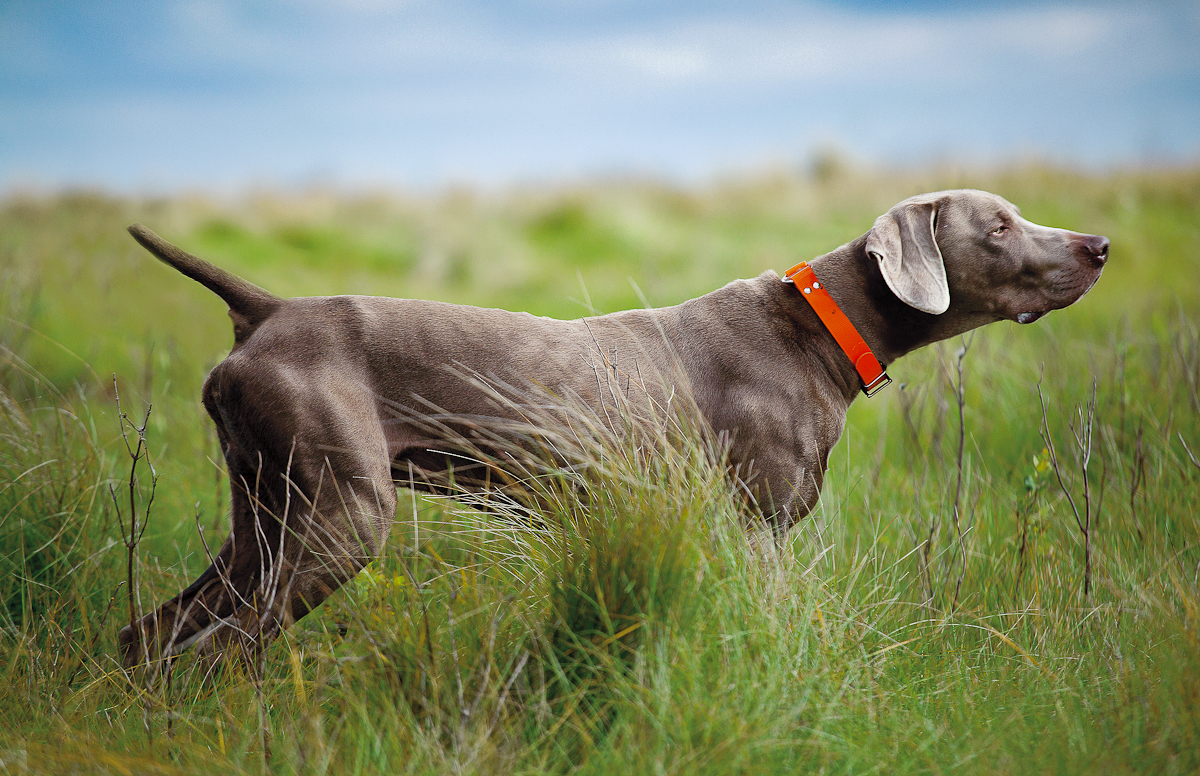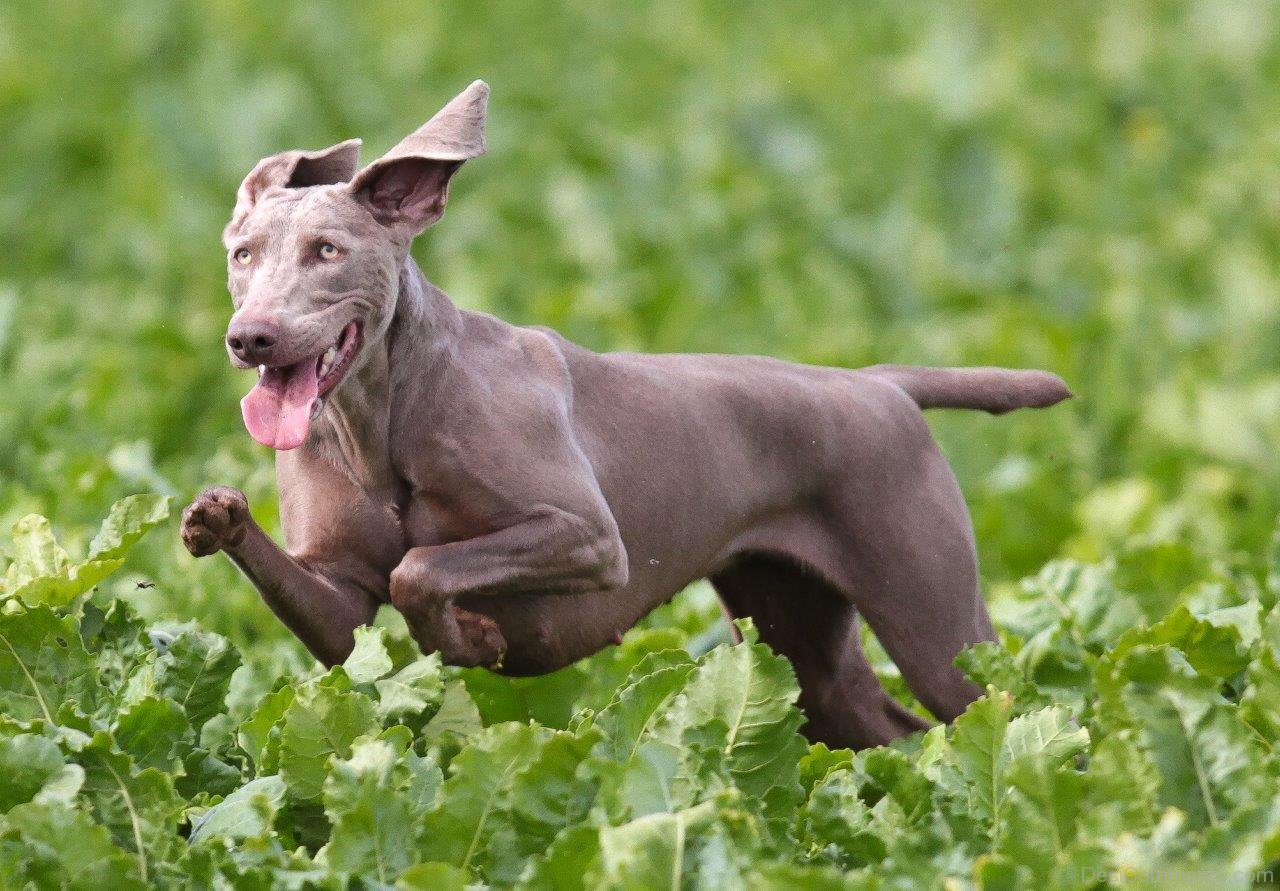
Weimaraner Dog Breed(Best guide) History, Basic Health, & More
The Weimaraner Dog was first bred by the Royal court in Germany in the WeimarValley. They were prized hunting dogs of Duke Karl August. The dog’s earliest origins are still a mystery although many people have given thoughts as to how they came about.
A Van Dyck painting from the early 1600s shows a dog that bears distinct likeness’s to the Weimaraner though it is difficult to prove if they are related.

The Weimaraner dog was used for hunting, tracking and for large games. The Weimaraner dog is in the gundog group in the UK. It is widely used for rough shooting. They are part of the HPR breed and this means they can hunt the animal, point the animal and once shot retrieve the animal. Whereas other breeds just retrieve e.g. Retrievers.
Characteristics Of Weimaraner Dog
The Weimaraner dog is the largest and most powerful dog in the gundog group. Their nature is stubborn and wilful; they can ignore their owners if they wish. Therefore training is needed with this breed. Every pedigree dog has a breed standard set out by the Kennel Club and breed clubs. This is what makes each breed individual and a pedigree dog. This includes size, color, characteristics, etc…
Training early on to teach your dog about other breeds of dog is very important. Puppy class’s for social skills. As the breed is intelligent and needs mental stimulation he makes a good dog do activities with.
He is a dog that needs firm handling, he is no fool, and he will work well for rewards. Give him something to work for and he will do it. You must be pack leader with this breed. This breed should not be brought with the view of a guard dog.

He needs off lead exercise every single day. He needs to free run and burn off energy and for mental stimulation. It is also important to have a trained dog so he comes back to you.
This breed can suffer from separation problems from his owner. He should not be brought by anyone that is working full time and can not commit to this breed. He will destroy your house.
Crate training is a good option for this puppy. He is a dog that requires human contact, and although he can be put in kennels, he does better in a home environment. Everyone should know that this breed is re-known for eating and scavenging anything and I do not mean food. Dishcloths, tea towels, underwear, and kid’s toys, plastic, the list is endless.
Always ensure your Weimaraner dog. If you do not you could have a hefty veterinary bill. There are two coat types the Shorthair and the Long Hair.

Health
The Weimaraner Dog is considered a very fit dog. Although as with every breed of dog there are health problems. We must remember the dog’s life is a short life. The Weimaraner lives to approx 13 years of age.
Therefore old age accelerates many health problems from 8-10 years onwards. The only Kennel club accredited breeder scheme health test required for the breed is Hip Dysplasia. This does not mean this is the only health problem in the breed.
Eye problems such as Distichiasis and entropion are seen in the breed. Bloat is a condition seen in large deep-chested breeds of dog. The stomach bloats and you can get gastric torsion. This is life-threatening and veterinary attention must be sought immediately. Nails need regular trimming. Ears need cleaning and teeth should be checked regularly.
Why a Weimaraner Dog
There can be few Weimaraner dog owners who will deny that their first attraction to the breed was the distinctive silver-grey coat. Although this color is not unique in that it appears sporadically in other breeds, selective breeding for the recessive trait has allowed the breed to develop in such a way that no pure-bred Weimaraner dog can be anything other than grey.
Once past this initial interest, there is a fascinating mixture of ‘saint’ and ‘sinner’ underneath. Bred originally for his tremendous scenting ability, the Weimaraner dog and handler led the hunting pack tracking wild boar & wild stag. The close bond thus established with humans remains to this day.
He is intensely loyal wishing at all times to be in the company of humans. Separation for long hours will lead him to believe he has been abandoned and he will fret, showing his disapproval by being noisy, destructive or both. He is not a dog to spend his days in a kennel. Indoors, he accompanies his owners from room to room.
Any new Weimaraner dog owner quickly learns that even the days of going to the bathroom alone are gone. Never happier than when he has physical contact, no matter what his age or size, the Weimaraner is convinced he is a lap-dog and sleeping partner.

As a Weimaraner dog proves his friendship and companionship, he expects the same and more from his owners. As a breed, they are dominant. They are highly intelligent and extremely willing to please.
Having been developed to ‘lead the pack’, if allowed, a Weimaraner dog will promote himself to that exalted position within the household. Even from puppyhood, the Weimaraner dog is a thinking creature.
He will show great respect for members of the family who are willing to give him the time, energy and imagination required to keep him fit in mind and body. Inconsistent handling, inappropriate discipline and weakness of character will all be treated with contempt.
He is a curious mixture of willfulness and sensitivity: too harsh an approach and he will ‘blank out’ seemingly unable to understand the simplest requirement: too much leeway and he will ‘do his own thing’. He has an unlimited learning capacity, be it for good or bad. Best described as not just a beautiful, elegant dog – more a dog, with the brain of a human.

Given a proper education in good manners coupled with his intense devotion, a Weimaraner dog brought up with children will give unconditional love and friendship, a shoulder to cry on, an ear to whisper secrets and a pillow to lie on and yet he will be a trustworthy protector if required.
Everything about the Weimaraner dog is an element of challenge. He is such a ‘get up and go’ creature possessed of quick intelligence, an abundance of energy, a drive to hunt, a streak of possessiveness and an exaggerated sense of devotion all of which must be tempered to the demands of modern living.
He is not everyman’s dog. He has been adapted to our requirements mainly as a rough shooter’s dog. As a companion, we must remember, understand and respect his heritage.
Living with a Weimaraner Dog
First and foremost, if you, or someone in your family, are not at home for most of the day, do not have a Weimaraner dog. No matter how beautiful you think they are or how much you want one, leaving a Weimaraner dog at home alone for hours on end will only result in frustration for the dog and anger for you when you return and discover the mess.
Let me paint a picture: you are living, thinking creature; like everyone else in the family, you have been asleep for 8 hours; first thing in the morning, you want to stretch your body, but instead, you get to go to the toilet, have a quick breakfast, watch the rest of the family getting ready to go away; you were alone again for another 8-9 hours; the last thing you want to do is sleep.
There is no television, no radio, no books, no hobbies. You just have to lie there. And it’s the same thing day in day out. Is it any wonder the chair leg has tooth marks, the pedal bin has been emptied all over the floor, you’re desperate to go to the toilet and can’t hold it in, you’ve started to howl with frustration and loneliness and the neighbors are banging on the wall. Be honest, could you do it? Well, neither can a Weimaraner dog.
From what you’ve just read, you’re thinking why anyone would ever want to have one!! Is there anything good about this breed? YES and YES AGAIN. Once you have lived in harmony with a Weimaraner dog, you won’t have anything else…..except maybe another one!

Big Baby Blue eyes, long ears, skin that looks like Nora Batty’s stockings. Who could fail to fall for that? The 8 weeks old above is now 27″ tall and weighs in at 34 kilos and he’s not yet 2 years old. He lives with a 4-year-old child, a 6-month baby, 2 Burmese cats, and a budgie.
He has been taught to fetch toys for the child, never to enter the baby’s room unless an adult is present, and always to walk calmly beside the pram. He has learned he is below the cats in the pecking order and to leave the room when the budgie is out of its cage.
He understands he will get three gallops a day, time to play with the children, time to sleep, a space to himself and time to cuddle up to Mum and Dad. He is a social, well-mannered member of society and is welcome everywhere.
He is greatly loved and gives 1,000% in return. Sounds idyllic, yet even now his owners still talk of the amount of work it took to get him to this state of perfection.
This would probably lead you to believe that Weimaraners are difficult to train. Quite the opposite is the case. They are extremely easy to train, teach it once, reward with food and a Weimaraner dog knows it.
You just have to be all the more inventive and imaginative. He is so quick to learn, if you don’t teach him the acceptable way to behave, he will teach himself …..and it won’t be acceptable.

The ‘How to’ Guide
The puppy above is sitting, why? Because there’s food. How? Take the treat over & above his head, his bottom has nowhere else to go but on the floor. You say the word as it happens. He has learned to sit on command. It’s not a great sit, but his feet are not jumping on you.
Someone comes to the front door, the puppy goes with you, you say ‘sit’, he sits, he gets food. He has learned ‘front door manners’.He’s sitting, you drag the treat along the floor away from him, his front feet slide along the floor, you say ‘down’ as it happens, he gets food.
He has learned to down on command. This is the most important lesson for a dominant breed. He’s sitting, you say ‘wait’, you count to 10, he gets food. He has learned to wait on command.
Bit by bit, you and the puppy build up a vocabulary based on action (what he does) and reaction (getting the reward). After all, if you were working, would you not want the reward of being paid at the end of the month?
